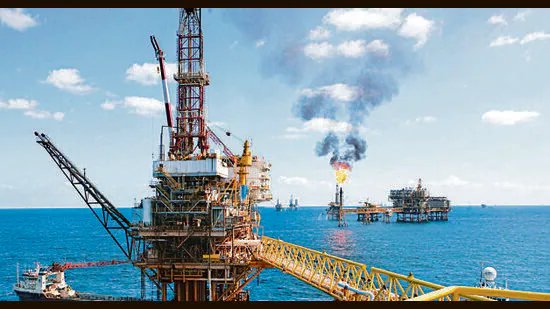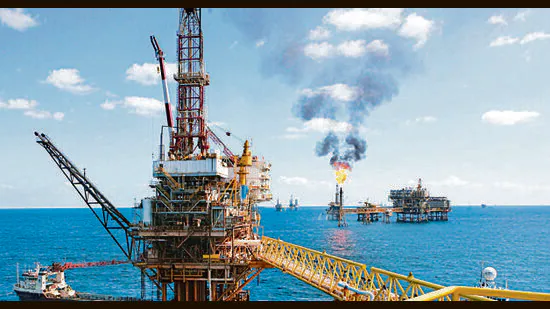The scale of flaring in local oil and gas fields is quite high, which is a waste of a scarce energy resource and also harmful for the environment
Gas flares take a toll on finances and environment

New Delhi: At a time when India is forced to buy costly natural gas form from international markets after long-term liquefied natural gas imports from Russia is disrupted, some domestic producers are flaring at least 3 million standard cubic metres of gas per day — sufficient to produce about 750 MW of electricity — due to a skewed pricing policy for indigenously produced gas.
The scale of flaring in local oil and gas fields is quite high, which is a waste of a scarce energy resource and also harmful for the environment. The government is aware of the matter and looking for ways to bring this gas into the supply system through incentives, as it would involve considerable investments and, at current pricing policy, does not make any commercial sense, two people aware of the development said, requesting anonymity.
This matter has been frequently raised by the Comptroller and Auditor General of India (CAG), the first person working in an economic ministry said. High pressure gas valued at ₹816.08 crore was flared in Mumbai High field of state-run Oil and Natural Gas Corporation (ONGC) during 2012-20, according to a CAG report released in December 2021.
The petroleum ministry did not respond to an email query on this matter.
ONGC, however, accepted flaring is a technical necessity. “During the first quarter of the year 2022-23, gas flaring has been 2.32% of total gas production. ONGC makes continuous efforts to minimise gas flaring. This gas flaring is a technical necessity for processing of oil and gas at installations to maintain pilot flares for avoiding escape of unburned hydrocarbons into atmosphere… in order to ensure safety and environmental protection,” a company spokesperson said.
The real reason lies somewhere between technical necessity and economic sense, experts said. “The cost of tapping this gas would be several times high and would not make any commercial sense due to the currently regulated pricing policy,” a second person mentioned above said.
There are companies such as Reliance Industries that do not flare any gas. While Reliance did not respond to a query on this matter, another state-run firm Oil India Ltd, said that “flaring is required for safety reasons” as the company maintains “minor gas flaring” for safe operation of crude oil and natural gas production and processing installations as a technical and safety requirement.
India regulates domestic gas pricing every six months. While gas price for April-September 2022 is $6.10 per unit, natural gas produced from deep and ultradeep water is capped at $9.92 per unit. Recently, after the Ukraine war, the supply of long-term cheaper Russian liquefied natural gas was abruptly stopped, forcing India to pay spot price of LNG, which is about 127% higher at around $50 per unit. HT reported it on August 10.
“It is technically essential to flare some of the low-pressure gas,” said SC Sharma, an energy expert and former officer on special duty at the erstwhile Planning Commission. “However, there had been economic reasons as the gas flaring nations mandate low price of gas for domestic use rather than commercialise it at an opportunity cost.”
India, which imports 55% of the natural gas it consumes, is not in a position to flare gas like other producing countries, he said.
“It is assumed that the high volume gas flaring nations like Russia, Iran, Iraq, Venezuela and to some extent the US are flaring natural gas as the gas prices are very low in these gas producing and exporting countries for domestic consumers compared with the price of gas to exporting nations,” he said.
Nations like India that import LNG as also produce domestic gas should minimise flaring of gas to zero given high import dependence on LNG at a high volatile price ranging from $12 to 18 per mmbtu (million metric British thermal unit) during high oil prices, as a majority of long-term LNG import contracts are either oil or Henry Hub gas indexed, he said.
“Recently, the oil companies have also announced a price band for purchase price of compressed biogas ranging from about $17.5 to 24 per mmbtu,” he added.
“Considering high import dependence of natural gas, government should come up with policy to monetise the flared gas from both onshore and offshore installations as a part of Aatmnirbhar Bharat (self-reliant India),” Sharma said.
Flaring is also detrimental for the environment. “Flaring of gas also has an adverse impact on environment as the emission of carbon dioxide leads to greenhouse gases and global warming,” the CAG report said.
During 2012-13 to 2019-20, a total of 1,227.343 mmscm (million metric standard cubic metres) high pressure gas valued at ₹1,021.08 crore was flared, it added.




I’m not sure whhy but this site is loading vry slow ffor me.
Is anyon else having this isse or iis it a isshe onn myy end?
I’ll chck back latyer andd seee if thee problem stilpl exists.
Dear reader Thank you for your feedback I will check it
Hi there, You’ve don a fantastic job. I’ll certainly
digg iit annd personally suggest tto my friends.
I aam sure they wilol be benefitedd frm this site.
Thank you for your support keep reading Sir